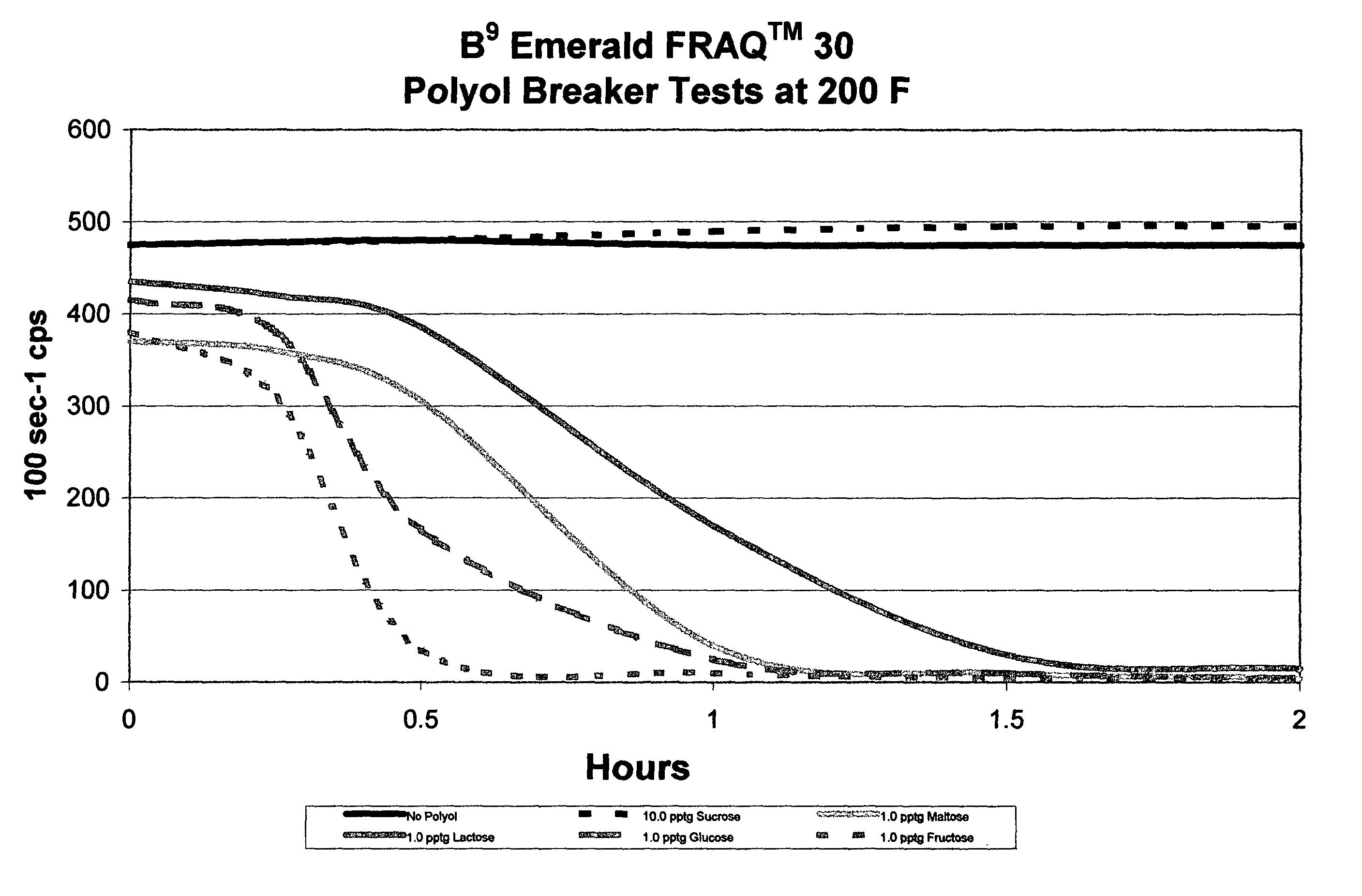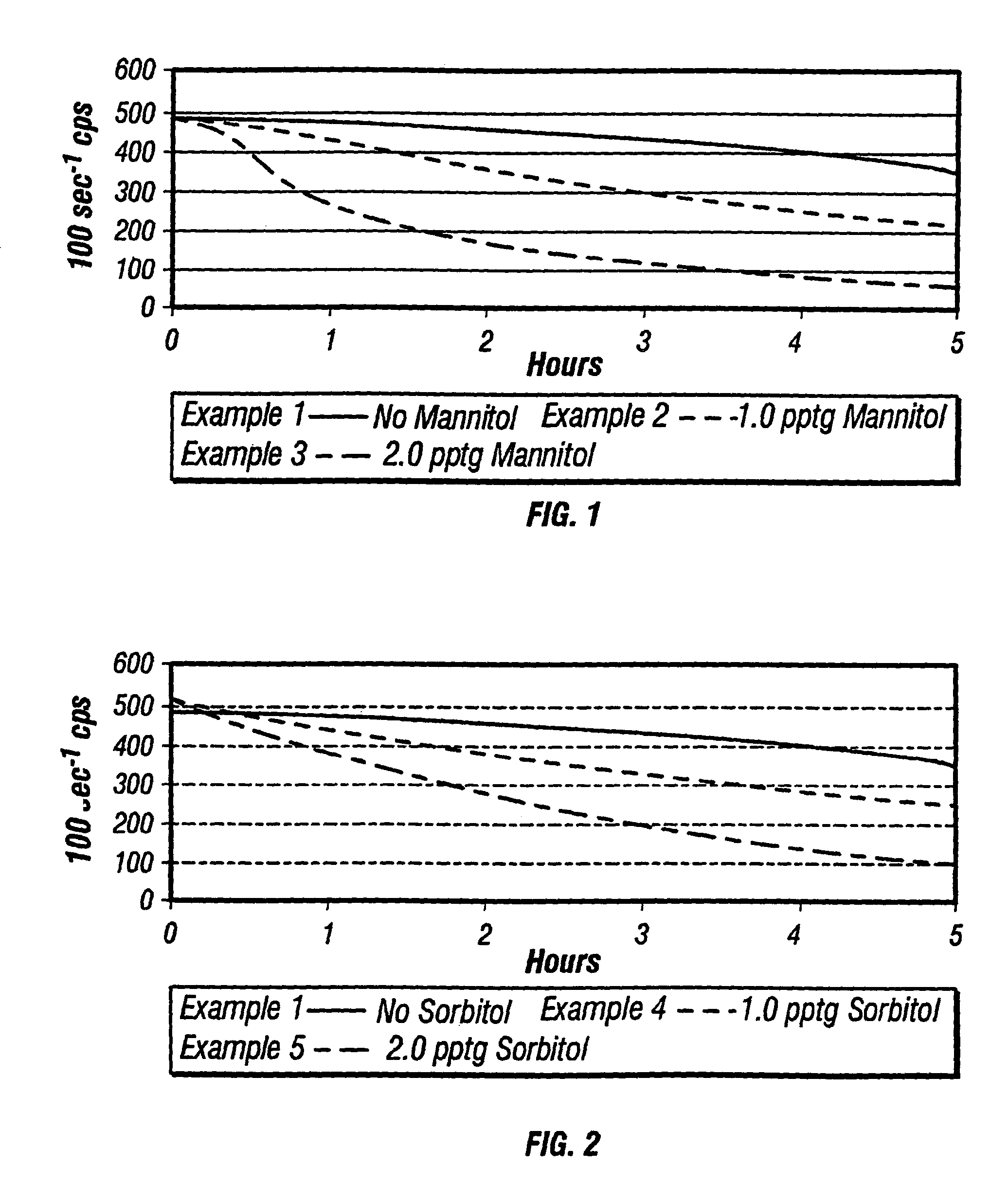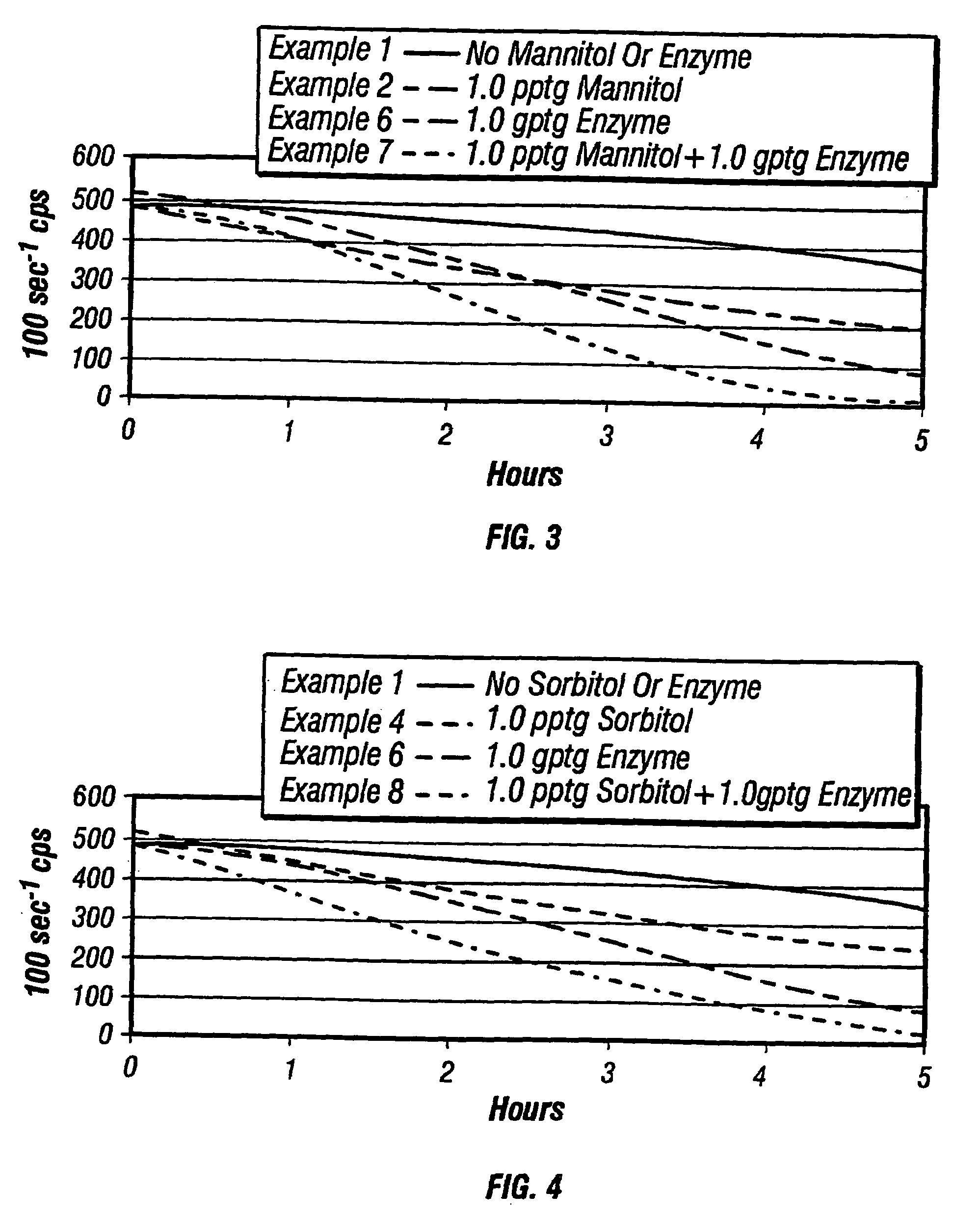Polyols for breaking of fracturing fluid
a technology of fracturing fluid and polyol, which is applied in the direction of other chemical processes, wellbore/well accessories, separation processes, etc., can solve the problems of fluid degradation, complex art of developing suitable fracturing fluid, and cracking or fractures that cannot close or heal completely
- Summary
- Abstract
- Description
- Claims
- Application Information
AI Technical Summary
Benefits of technology
Problems solved by technology
Method used
Image
Examples
examples 1 – 3
Examples 1–3
[0060]Examples 1–3 show the effects of using no enzyme breaker with various levels of mannitol. The general procedure was followed where the Drilling Specialties Slurry Guar polymer loading was 30 pptg (pounds per thousand gallons) (3.6 kg / m3). The crosslinker was as noted in the general procedure. The temperature was 175° F. (79° C.).
[0061]The results are presented in FIG. 1. It may be observed that the system of Example 2 containing 1.0 pptg mannitol (0.12 kg / m3) reduced the viscosity considerably and faster than the degradation for the control Example 1 containing no polyol viscosity breaker. As expected, the Example 3 system containing more mannitol (2.0 pptg (0.24 kg / m3)) reduced the viscosity to lower levels and at a faster rate.
[0062]The term ND30FW in this and other Examples refers to a 30.0 lbs / 1000 gallon non-delayed (ND) borate crosslinked fluid in 2% KCl fresh water (FW).
examples 4 – 5
Examples 4–5
[0063]Examples 1, 4 and 5 show the effects of using no enzyme breaker with various levels of sorbitol. The general procedure was followed where the Drilling Specialties Slurry Guar polymer loading was 30 pptg (3.6 kg / m3). The crosslinker was as noted in the general procedure. The temperature was 175° F. (79° C.).
[0064]The results are given in FIG. 2. The graph for control Example 1 containing no sorbitol shows only the slow, unassisted viscosity degradation with time. Example 4 containing 1.0 pptg (0.12 kg / m3) sorbitol demonstrated more rapid viscosity reduction. The Example 5 system containing 2.0 pptg (0.24 kg / m3) sorbitol showed yet more rapid and greater viscosity reduction, as expected, beginning about 1 hour into the experiment. Given the temperature and amount of sorbitol, it may be that over the first 1 to 4 hours it is primarily sequestering of the borate ion that contributes to the gel breaking. Degradation of the backbone will start at about 1 to 2 hours in th...
examples 6 – 7
Examples 6–7
[0065]Examples 6 and 7 show the effects of using the Spezyme FRED enzyme breaker (from Bio-Cat Inc.) with and without mannitol, one of the polyols of the invention. The general procedure was followed where the Drilling Specialties Slurry Guar polymer loading was 30 pptg (3.6 kg / m3). The crosslinker was as noted in the general procedure. The temperature was 175° F. (79° C.):
[0066]The results are shown in FIG. 3. Again, comparative and control Example 1 used no enzyme or mannitol. Example 2 again employed only mannitol. Example 6 used 2.0 gptg of the “FRED” enzyme from Biocat but no mannitol, and the breaking rate was similar to that for Example 2 for about the first three hours, after which the gel broke faster and more completely as compared with Example 2. However, in the Example 7 system, which used 1.0 gptg of the FRED enzyme (as in Ex. 6) and 1.0 pptg (0.12 kg / m3) mannitol (as in Ex. 2), the viscosity decrease was unexpectedly even more rapid and complete beginning a...
PUM
| Property | Measurement | Unit |
|---|---|---|
| temperature | aaaaa | aaaaa |
| time | aaaaa | aaaaa |
| temperature | aaaaa | aaaaa |
Abstract
Description
Claims
Application Information
 Login to View More
Login to View More - R&D
- Intellectual Property
- Life Sciences
- Materials
- Tech Scout
- Unparalleled Data Quality
- Higher Quality Content
- 60% Fewer Hallucinations
Browse by: Latest US Patents, China's latest patents, Technical Efficacy Thesaurus, Application Domain, Technology Topic, Popular Technical Reports.
© 2025 PatSnap. All rights reserved.Legal|Privacy policy|Modern Slavery Act Transparency Statement|Sitemap|About US| Contact US: help@patsnap.com



